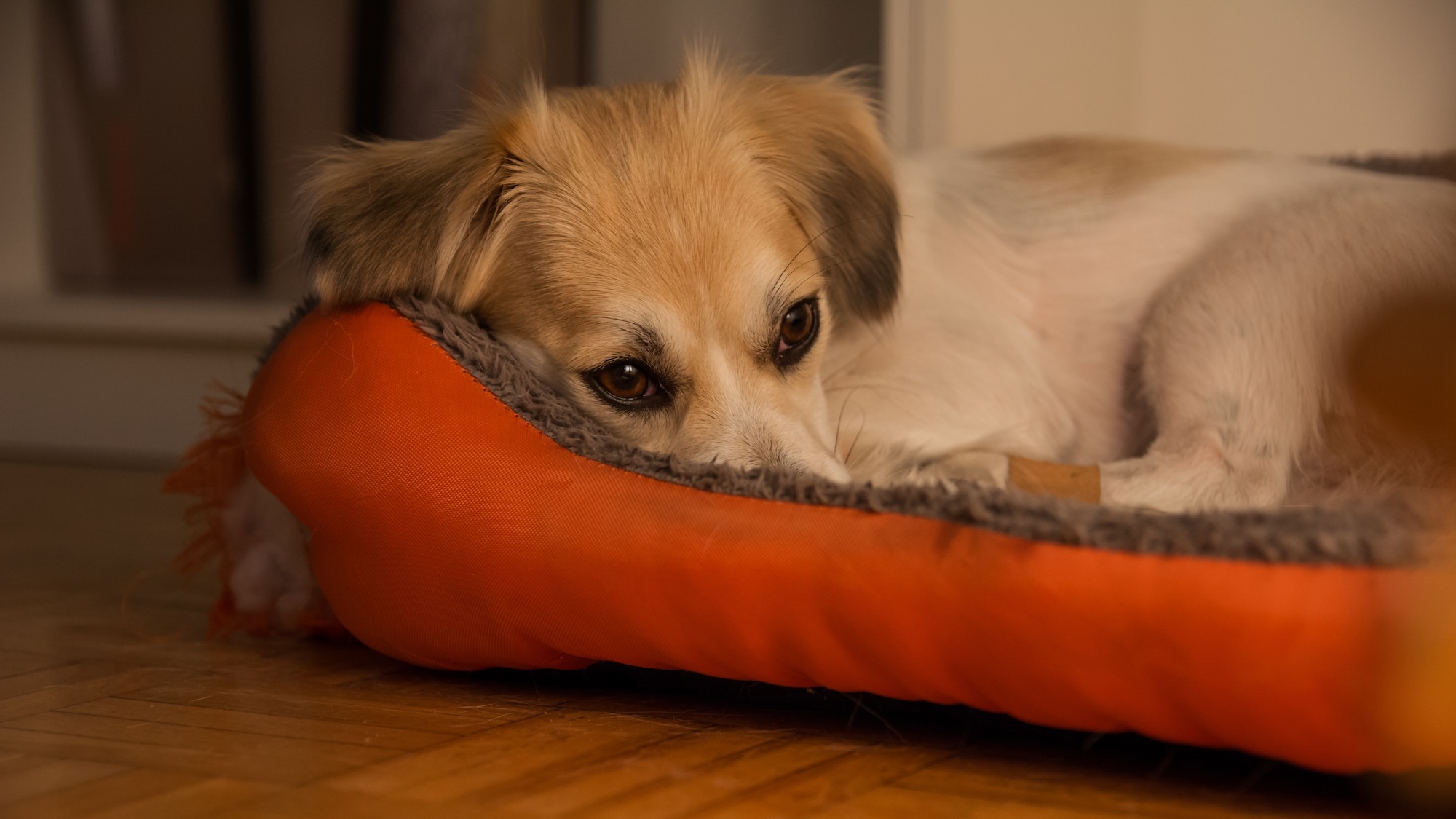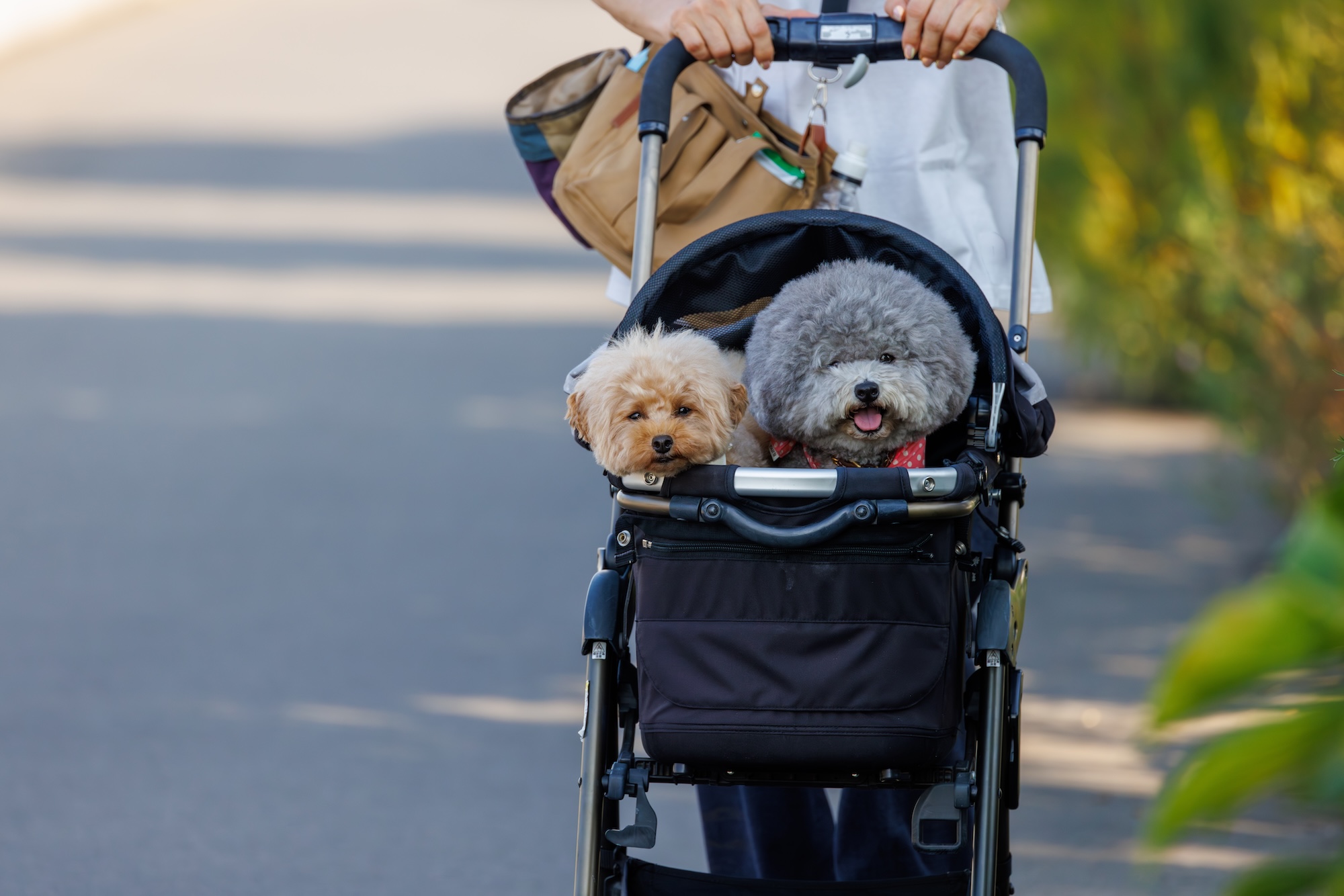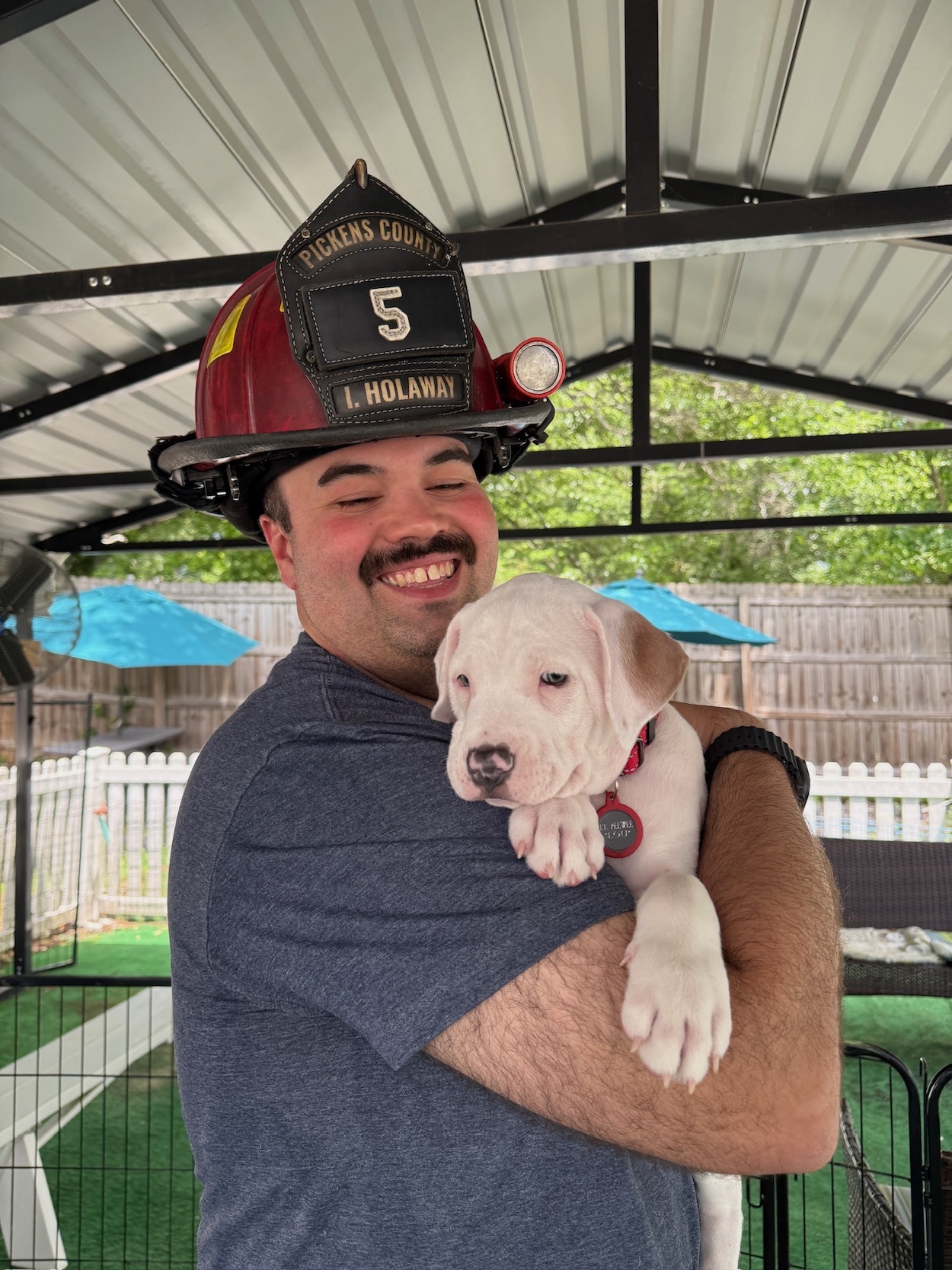You may count dogs among your best friends or the members of your family—but wild animals may see them very differently.
Sometimes, believing that dogs are prey or a threat, coyotes, birds of prey, and other creatures attack them—even in suburban or urban environments. “We have coyotes in every town in mainland Massachusetts. That even includes very developed areas like downtown Boston,” says Meghan Crawford, Community Engagement Biologist at the Massachusetts Division of Fisheries & Wildlife. And New York State Department of Environmental Conservation Regional Wildlife Biologist Kevin Clarke says that “Conflicts between coyotes and small dogs are not uncommon.”
In most cases, though, you can protect your dog from such dangers by taking some simple precautions. Here’s what you need to know to prevent other critters from harming your pal.
Stay near your dog, watch them closely, and keep them leashed
Every area has its own wild animals that can pose risks to homed dogs—but if you’re looking for a few simple rules that will help reduce the chances of your dog being attacked while they’re out and about, these will go a long way:
- Stay close to your dog
- Keep your dog on a leash (preferably six feet or shorter)
- Watch your dog closely and don’t let them get close to wild animals
While it’s impossible to totally eliminate risk, these measures can make it much more likely that your dog’s outdoor experience will be pleasant and safe.
There are also companies that sell distinctive-looking, spiky clothing designed to protect dogs from coyotes and birds—but you should always keep your eyes on your dog and remain near them outdoors, no matter what they’re wearing.
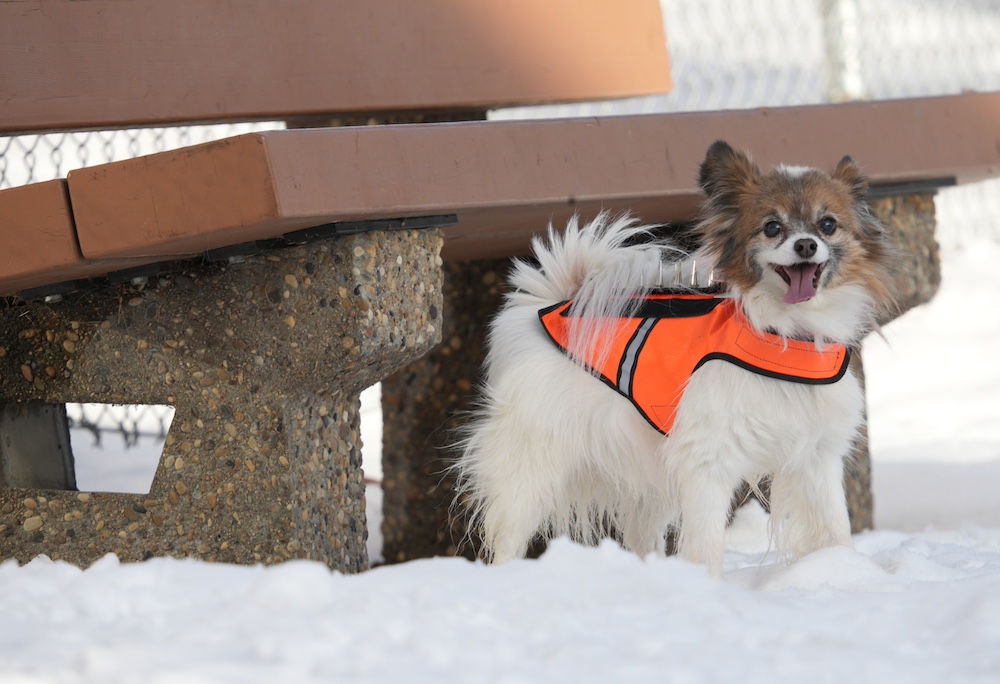
If you see a coyote, don’t panic
Don’t let your dog get close to a coyote—but also don’t panic and run away if you see one. Doing so, says Crawford, activates the “innate chase response” that helps them catch prey. It’s much better to calmly walk away from the coyote—without turning your back, if you can do so safely.
If you can’t look at the coyote continuously as you’re walking away, Samantha Kreling—the University of Washington PhD candidate who runs the Seattle Coyote Study—suggests glancing back periodically to make sure they’re not following you.
If your dog is small enough to pick up when you see a coyote, do so. Otherwise, stay close to your dog. If you’re near your home, you may want to bring your dog back inside so you know that they’re safe.
But, if you do that, Crawford recommends that you return outside to haze the coyote by making yourself appear larger and making loud noises. You can do this by clapping, honking an air horn, blowing a whistle, shouting, and/or waving your arms around your head.
“The goal,” says Crawford, “is to kind of frighten the coyote, remind it to be a little unsure around people. That’s good for the coyote—and it’s good for people and their pets as well.”
While you might prefer to bring your dog inside before hazing a coyote, Crawford says it’s safe to do so with your dog present as long as they’re close to you or in your arms.
The exception to this hazing advice is if a coyote seems to be injured or sick, especially with rabies. If, Crawford says, a coyote “has uncoordinated movements, is unusually aggressive, especially toward inanimate objects—like biting tires of a vehicle—or [is] salivating a lot and just generally looking a little off,” don’t attempt to haze them. Instead, call local authorities so that they can handle the situation safely.
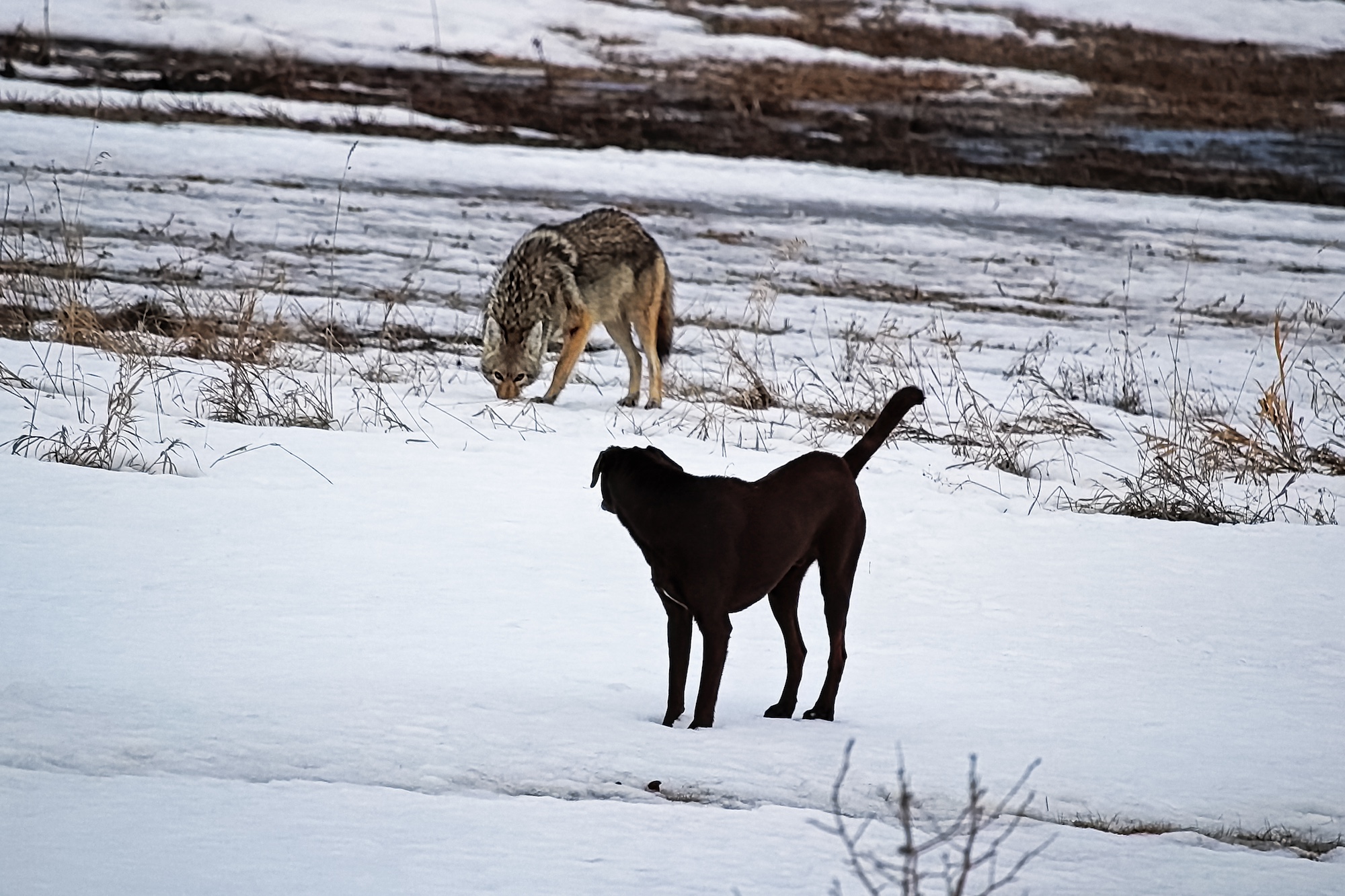
Know that you can encounter wild animals on your own property
If you live in an area with coyotes, walks aren’t the only times your dog might encounter them.
“A lot of the time when I see pets being taken,” says Kreling, “it happens to be in their backyard.” That’s why she recommends doing everything you can to prevent coyotes from getting onto your property in the first place.
One way to do this is to take away anything that might lure them. “Negative interactions with coyotes and people can arise in residential areas when homeowners leave garbage or pet food outside,” says Clarke. So don’t leave garbage accessible outside, and think about what might be growing in your backyard.
“If you have a backyard with fruit on the ground,” says Kreling, “that’s going to draw coyotes closer to those areas.” Taking away food can also reduce the likelihood of other wild animals, including bears, wandering onto your property.
In addition to removing attractants, another important step you can take is making it harder for coyotes to get onto your property even if they want to.
Crawford recommends that, if you’re trying to keep coyotes and other wild animals out of your backyard, you install a fence that’s at least six feet tall. “Although,” she cautions, “coyotes can still attempt to get over that six-foot-tall fence.” For extra peace of mind, Crawford says, you can put rollers on top of your fence, preventing coyotes and other animals from getting enough of a grip to climb over it. It can also be helpful to extend the fencing into the ground to stop animals from digging underneath it.
And, of course, always stay close to your dog and supervise them when they’re outside—even on your own property. No matter what precautions you’ve taken, it’s possible that a wild animal could appear; in the case of a bird, they could even swoop down from above.
If your dog comes into contact with a wild animal, call the vet
Bring your dog to the vet if they have been attacked or otherwise come into close contact with a wild animal. Even if it doesn’t seem like your dog has been bitten or injured in any way, some problems can be difficult to spot or even invisible at first. These include diseases and internal injuries. You and your dog are better off safe than sorry.
Respect nature, but enjoy it
While wild animals can pose a danger to your dog, you don’t have to live in fear. If you follow the precautions above, chances are that you and your dog will have fun and stay safe outdoors.
